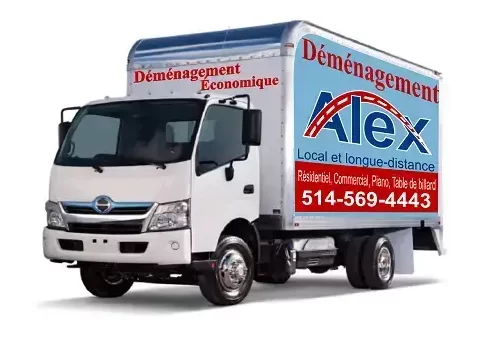Moving: tips for successful packing

If you want to do your own packaging, we can provide all the supplies you need, such as bubble wrap and boxes of all sizes.
Here are some packing tips, as well as guidelines for packing household items for a move to Montreal and its surrounding areas, or long distance.
Before packing
- Identify all items that need to be packed.
- For simplicity and planning purposes, create a schedule for packing all your items.
- Purchase the boxes and materials needed for the move (including packing paper, plastic, bubble wrap and tape). Get 2 or 3 uniform sized boxes for packing to save storage space by stacking.
- Get clothing boxes that have enough height to hang and store some clothes like dresses and suits.
- Get packing tapes and masking tape that are needed to glue the boxes and packages.
- Get strong ropes to secure boxes and items.
- Get firm pack boxes to prevent the contents from shifting during your move.
- Obtain labels (preferably colored labels) and markers for labeling all packaged items.
Packaging
- For your convenience, pack and move all similar small items together.
- Place heavy items in small boxes and light items in large boxes.
- Pack fragile and non-fragile items separately.
- If possible, pack an entire room and mark each box with a description of its contents and destination (e.g., kitchen, master bath).
- After packing and closing each box, put the labels on the box immediately. Ensure that all boxes containing fragile and valuable items are marked.
- For better management, distribute heavy items in smaller boxes and avoid using one heavy box. Remember that the weight of a box should not exceed 30 to 40 lbs. Fill the empty space in these boxes with packing paper.
- Once all the boxes are packed, create an inventory list of all these packed boxes with their labels (and contents).
- And now here are some packing tips with more details.
Appliances
- Defrost and dry your refrigerator and freezer thoroughly before moving day.
- Empty the contents of appliances such as the refrigerator or freezer, washer and dryer.
- Drain the water from your washer or get help from a repairman to do so.
- Remove all perishable items and do not pack them.
- If available, remove all flammable or combustible liquids.
- Attach and lock all moving parts such as doors and bins.
- Cover all items with wrapping and protective paper.
Furniture
- Clean all furniture and apply a protective coat.
- Wrap the legs of the chairs with wrapping paper
- Cover all upholstered items with a plastic cover
- To simplify the move, disassemble as many furniture items as possible, such as tables, etc.
- For furniture and many pieces, mark them with a note for easy reunion later.
- Pack the legs and extra plates of the tables with padding.
- When disassembling furniture, beds, lamps, etc. put the material in a plastic bag with assembly tips and stick it on the piece itself.
Electronics
- If applicable, use the original boxes to pack electronic items.
- Rangez les dossiers et les CD verticalement dans des boîtes. Do not stack satellite dishes.
- Tie up all the moving parts and wrap them with paper placemats.
- Use sturdy boxes and plenty of padding when packing electronic items.
- Don’t forget to bring all associated cables and power cords.
- Make sure these boxes are labeled and marked as “electronically fragile”.
Fragile items
- Use “CAUTION-FRAGILE” labels on boxes containing breakable items. This will alert the movers to proceed with caution.
- Use caution and be very careful when packing fragile items such as glasses, mirrors, ceramics and dishes.
- Group all similar items in one box. Fill the empty space with packing paper.
- For mirrors, mark the edges of the box and always hold them on the edge to avoid breakage. Also avoid placing the mirror surface horizontally on the floor.
- Make sure all these boxes are also labeled and marked as “fragile”.
Unpacking
- Refer to your inventory list for any boxes that need to be unpacked.
- Plan and consider a schedule for unloading and unpacking these boxes.
- If necessary, reassemble the units using the tools provided in the box.
- Unload the boxes in the appropriate rooms according to their labels.
- Unpack the boxes one by one to ease the workload.
- Assemble all components that have been disassembled during packaging according to the instructions.
- Make sure all unpackaged items are processed before opening another box or going to another room.
The following items should not be packed during a move. It is preferable and recommended to take them with you in your own car, mini-van or even by plane.
- Money (cash)
- Jewelry
- Safe and its contents
- Stamp or coin collection
- Wills and notarial acts
- Mortgage / stocks / bonds / other valuable documents
- Items of sentimental family value such as photo albums
Dangerous goods
The following items are considered dangerous and risky and cannot be transported and accepted by the moving company:
- BBQ Tanks / Pressure Tanks
- Ammunition and loaded firearms
- Explosives / firecrackers / rifle / fireworks
- Gasoline / Kerosene
- Matches or lighter
- Flammable or corrosive chemicals
- Paint
- Aerosol cans
- Cleaning and bleaching liquids
- Batteries
- Perishable goods and foodstuffs / food in glass jars
OUR DISCOUNTS
Why us?
- More than 15 years of experience
- Availability 7 days a week
- Experienced Movers
- SAAQ and CTQ certified trucks
- 100% Satisfaction Guaranteed











